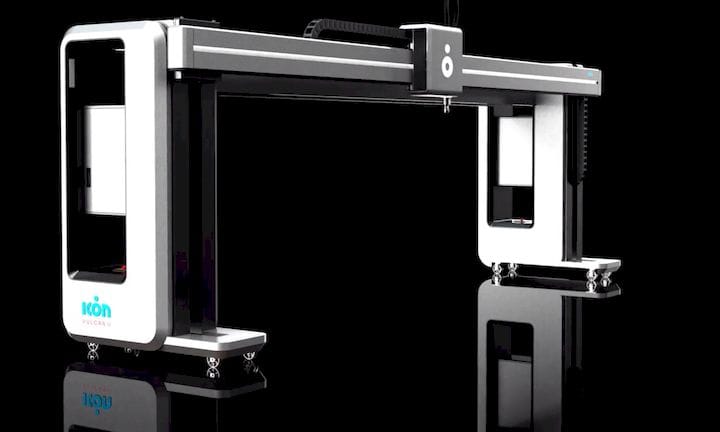![The Vulcan II construction 3D printer [Source: ICON]](https://fabbaloo.com/wp-content/uploads/2020/05/image-asset_img_5eb09a33b38ab.jpg)
A more sophisticated construction 3D printer has been announced by ICON.
The Austin-based startup company has already been an our pages, but now they appear again as they have announced the Vulcan II construction 3D printer. Last fall they raised US$9M in investment, and apparently part of that money was used to developed this new device.
There are now multiple startups announcing various types of construction 3D printers, and it’s beginning to get more difficult to distinguish between them. However, it seems that the Vulcan II has some interesting attributes that might put it ahead of the competition.
They’ve designed a system that is easily usable, integrating both hardware and software. Here you can see a screenshot of their tablet-based control system. Note that the tablet seems to be in a rugged holder, suitable for outdoor use where the system would be used.
![Vulcan comes with an integrated tablet-based operating system [Source: ICON]](https://fabbaloo.com/wp-content/uploads/2020/05/tablet_img_5eb09a341795b.jpg)
In addition to the control system, ICON also provides a specialized CAD application, in which building designs suitable for the Vulcan II can be easily created. I believe this is the first time I’ve seen such tight integration between the hardware and software of a construction 3D printer.
The machine itself is obviously large, and can build within a 2.6 x 8.5 m 2D vertical plane, which can move along a flat service to enable buildings of arbitrary length. ICON says it requires up to 35 kW at peak power, with a nominal consumption of 16 kW.
There is a mandatory accessory to the system, called Magma. This is the supply unit that delivers extrudedable concrete to the printer during operations. ICON has configured it to be operated in a simple matter, as they say “it’s as easy as the push of a button” for all of its possible functions.
ICON says there is only one material certified for use in the system, one that they’ve developed internally called Lavacrete.
Lavacrete is a bit of a mystery, but they do say:
“ICON’s proprietary Portland Cement-based mix is a closely guarded secret that enables us to rapidly print homes that are beautiful, structurally sound, and cost effective.”
I suspect that building engineers would be extremely interested in the engineering specifications of this material, as they likely would not certify building designs without knowing the specifics.
While this system sounds very promising, there is no information available on when the device is to be released, nor what its pricing might be. Given the significant and growing competition in this area, ICON will have to clearly demonstrate this value before clients will purchase the Vulcan II.
Via ICON











COBOD’s BOD2 construction 3D printer seems to be catching on as the company has made multiple sales of the new device.